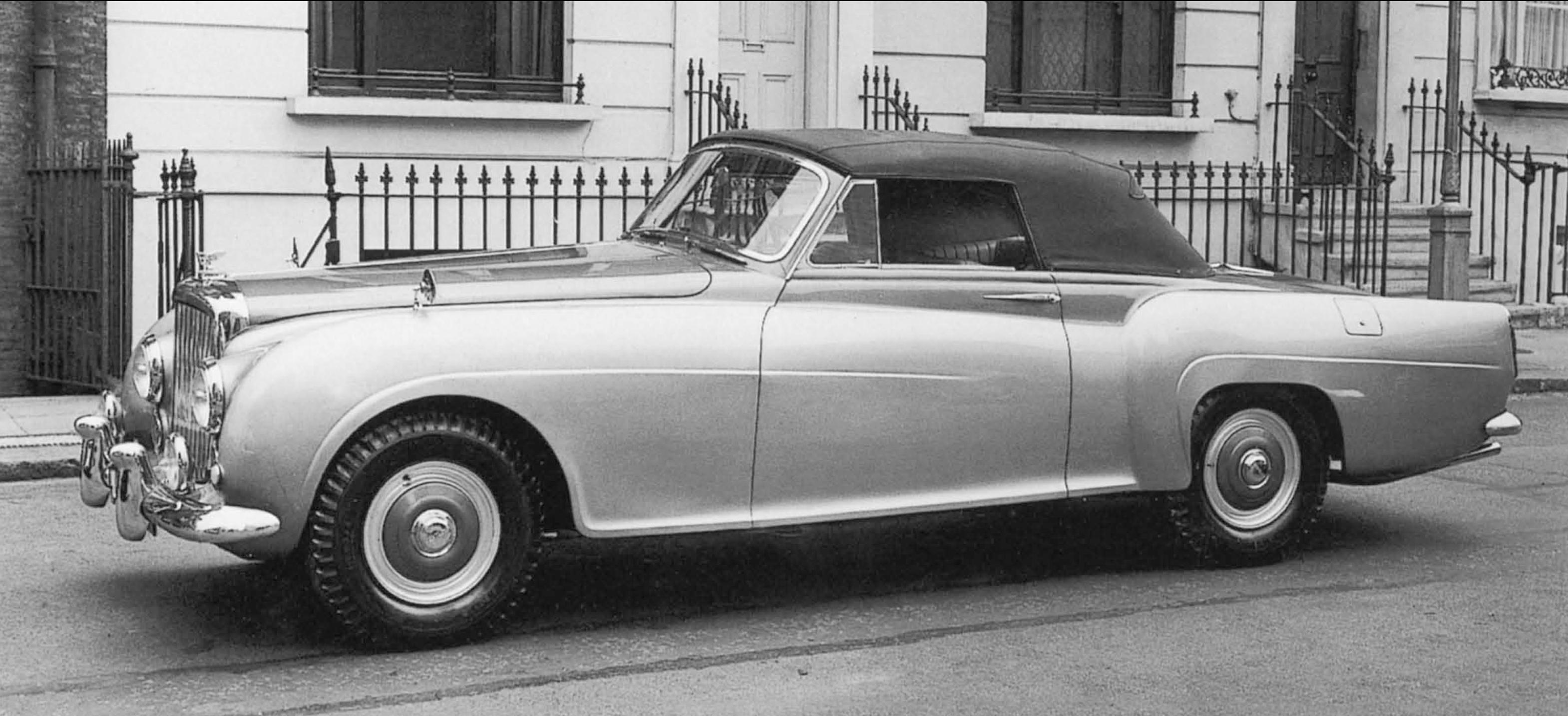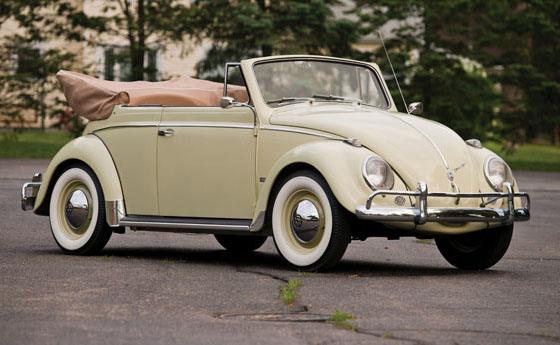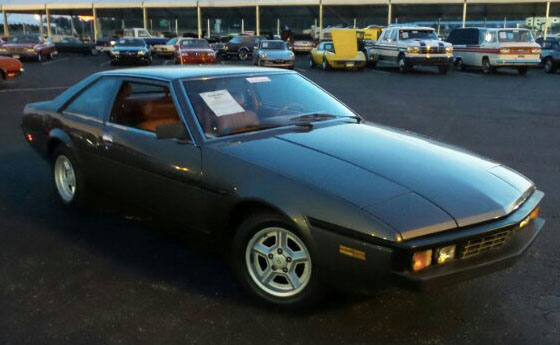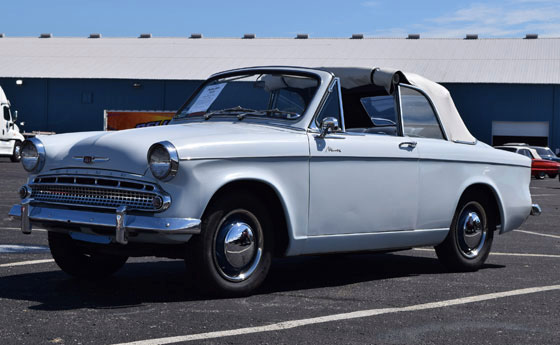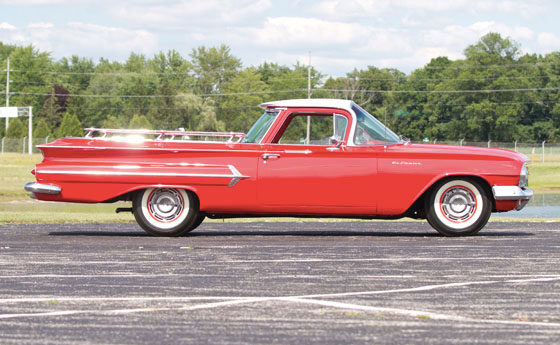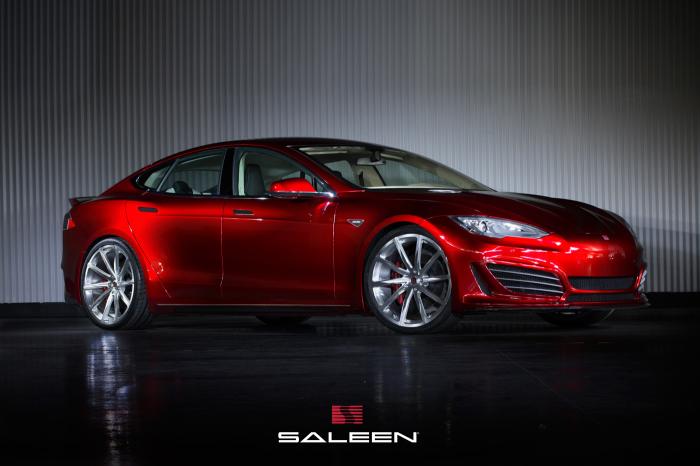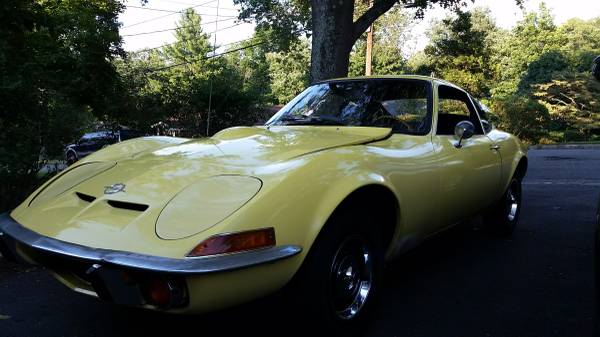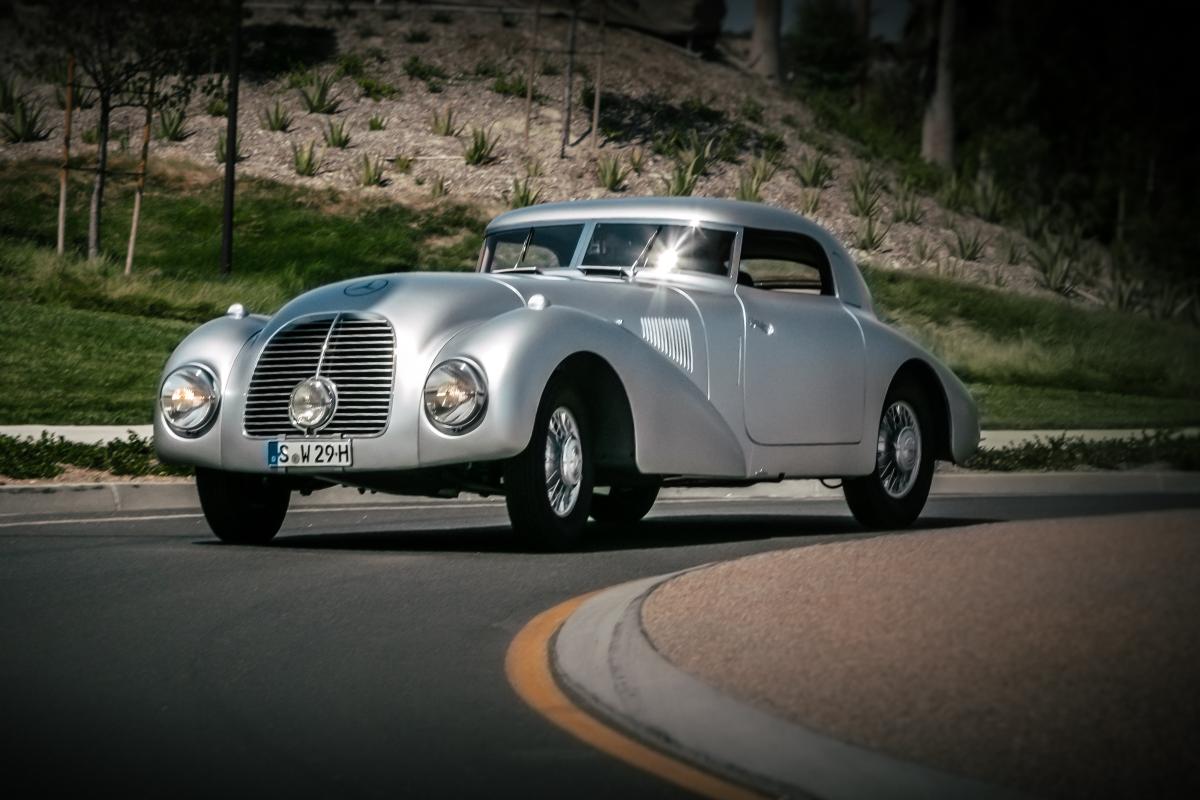
(MAHWAH, N.J.) – September 2, 2014 – Land Rover today revealed the new Discovery Sport, a versatile premium compact SUV that is the first member of the new Discovery vehicle family. A dynamic design with a compact footprint provides seven-passenger seating in a “5+2” configuration. The 2015 Discovery Sport will deliver a highly refined combination of performance, safety and efficiency thanks to a body shell of high-strength steel and lightweight aluminum, a 240hp turbocharged 2.0-liter engine, nine-speed automatic transmission and standard all-wheel drive.
New Land Rover innovations debut in the Discovery Sport, including available Autonomous Emergency Braking2 and a new touchscreen infotainment system3.
“The launch of Discovery Sport is a pivotal moment in the 66-year history of Land Rover,” said Phil Popham, Jaguar Land Rover Group Marketing Director. “Not only does it mark the introduction of the first new member of our expanding Discovery family, it also brings the versatility of 5+2 seating to the compact premium SUV market.”
Designed and engineered at the Land Rover Development Center in the UK, the Discovery Sport will be produced at the company’s award-winning manufacturing facility in Halewood, Liverpool, in the United Kingdom. It goes on sale in early 2015 alongside the existing seven-seat Land Rover LR4 in the US, which is sold as the Discovery in over 170 markets worldwide.
DESIGN
The progressive design of the Discovery Sport sets the tone for a new generation of Land Rover Discovery premium SUVs. A dynamic, emotional design sets the Discovery Sport apart from luxury competitors, yet this new model also offers greater versatility than other premium compact SUVs. Its seven-seat capability and elegantly integrated storage areas make the Discovery Sport an ideal family vehicle. High-quality materials and finishes typical of Land Rover also distinguish the driving experience.
Roomy Interior, Compact Footprint
Some compact SUVs go for visual impact. Others prioritize space usage and versatility. The new Land Rover Discovery Sport combines the two and also offers the brand’s renowned all-terrain capability, with the ability to scale a 45-degree incline.
Built on a 107.9-inch (2,741mm) wheelbase for ride smoothness and generous middle-row legroom, the Discovery Sport nevertheless could take a “compacts only” parking space with its 180.7-inch. (4.59 mm) overall length. The vehicle’s proportions put the wheels out at the corners, contributing to both a low center of gravity and a “planted” stance.
Aside from the overall shape, details including a clamshell hood and distinctive two-bar grille with hexagonal mesh connect it to its’ Land Rover identity. Large outboard air intakes and LED fog lamps in the front bumper convey a strong sense of “sport,” while the slim, wraparound headlamps are reminiscent of designs used on Range Rover vehicles. Round daytime-running lights (DRLs) are punctuated at four equal intervals to represent the points of a compass, a nod to the vehicle’s considerable capabilities.
Halogen headlamps and DRLs will be standard, and available trim upgrades will include Xenon headlamps and LEDs (light emitting diodes) for the DRLs. The tail lamp design echoes the headlamps’ slim, wraparound design, accentuating the dynamic bodylines.
A pronounced step from the rear edge of the hood into the rising beltline, combined with a roofline that tapers subtly downward toward the rear, creates a dramatic profile and sense of motion. The C-pillar rakes dramatically forward toward the gloss-black window surrounds, allowing for an optional contrast roof design.
A new blade-like interpretation of the signature Land Rover fender vents sweeps into a dynamic bodyline that continues to the rear of the vehicle. The robust wheel-arch moldings pay homage to Land Rover heritage.
With the design comes function, too, especially with regard to reducing wind noise. An acoustic laminated windshield, along with the vehicle’s aerodynamic details — such as specially shaped A-pillars and door mirrors – help create a hushed cabin. Aerodynamic detailing at the rear helps to reduce road grime or dirt picked up by the body, especially on unpaved roads or in winter driving. Skid plates are functional and create a design element repeated front and rear.
At the rear of the vehicle, the spoiler features inner extensions that improve aerodynamic efficiency. Advanced LED light-pipe technology used for the center high-mount stoplight (CHMSL) uses creates a slender and elegant ribbon of light.
The Discovery Sport will offer a wide palette of exterior color options: Fuji White, Santorini Black, Corris Grey, Indus Silver, Loire Blue, Scotia Grey, Kaikoura Stone, Firenze Red, and a limited edition color, Yulong White.
An available “Black Pack” trim package emphasizes the vehicle’s sporty stance, with gloss-black used for the grille, door mirror caps, front fender vents, and badging. The package also includes a choice of 19- or 20-inch alloy wheels. A contrast roof, available in Santorini Black, extends to the base of the A-pillars.
Five distinctive alloy wheel designs will be available with Silver or Gloss Black finishes.
Premium Interior
The Discovery Sport cabin coddles the driver and passengers in true Land Rover luxury. To create a family-friendly SUV, Land Rover invited a large cross-section of families to the development center and watched as they climbed into a variety of current SUVs and performed tasks, such as accessing third-row seating, syncing electronic devices, installing child seats and placing drink containers in cup holders. The results of the study helped designers shape the cabin design and details.
While prioritizing expanded passenger room in all dimensions, the Land Rover Discovery is still able to provide elevated “stadium seating” for the middle row. Second-row passengers sit two-inches (50mm) higher than front-seat occupants, providing a more open feel. The versatile second row seat, in addition to its 60/40 split seatbacks, includes a recline feature and can slide rearward by up to 6.3- inches. In that position, the seat provides 39.8-inches of legroom. The backs of the front seats are contoured to expand second row knee room. The easily accessed child seat LATCH connectors make it easy to swap child seats between vehicles.
A new multi-link rear suspension reduces rear suspension intrusion beneath the luggage area, and new space-efficient electrical modules and wire routing help to unlock additional cabin room. Those elements proved key in allowing Land Rover to offer seven passenger seating with a 5+2 third row for occasional usage. When the third-row seat is folded, luggage volume equals that of the two-row model. Both the second- and third rows can be folded down using one hand to create a spacious load area. A low luggage compartment floor makes it easy to load and unload large items.
Clean Yet Striking Cabin Design
Designed to accommodate families, the Land Rover Discovery Sport nevertheless caters to the driver. That of course starts with the brand’s traditional raised Sports Command Driving Position – not just a raised seat height, but also a design that positions the seat, pillars and dash to maximize forward visibility. In a theme similar to Range Rover models, the front cabin design uses the strong vertical lines of the center console and the slimmer horizontal elements of the instrument panel to create a striking though elegant appearance. A prominent center console groups all controls logically. Soft-touch rotary controls and buttons set into a gloss-black surround create a tactile user-interface and are easy for the driver to find under the glare of direct sunlight.
A three-spoke, multi-function steering wheel frames an easy-to-read instrument cluster, with twin analog dials set deeply into cylindrical housings to shield them from glare. A 5-inch color TFT display is positioned between the main gauges presents key data such as fuel levels, gear position, coolant temperature and Terrain Response® modes. Paddle shifters allow manual control for the nine-speed automatic transmission.
Upper trim levels feature twin-needle-stitched leather on the upper reaches of the instrument panel and door surfaces, and the center console’s vertical spars are available in a genuine metal finish. Configurable mood lighting, controlled via the central 8-inch touch screen, enhances interior ambience.
All Land Rover Discovery models come standard with leather appointed seating, ranging from grained part-leather on SE models up to luxurious Windsor leather on the range-topping HSE Luxury. Five interior color options include Ebony, Cirrus, Ivory, Almond and Tan.
Convenience at Every Turn
Storage and power points, two features that family buyers demand in a premium SUV, are offered in abundance in the new Discovery Sport. Two center console designs are available, depending on the model grade. The standard console provides space for two cups along with a separate roller storage section. Upper trim levels include a sliding armrest and a roller-style cover for the storage bin, featuring removable cup holders. The space can be reconfigured quickly to securely hold a two-liter bottle.
The front and rear door panels offer ample storage space, as well. Third-row passengers have a storage area, and luggage compartment rails are available for the cargo area.
With even the youngest passengers climbing onboard with a smartphone, iPod or other electronic devices, Land Rover has equipped the new Discovery Sport with up to four 12V power points. Three-row models can have as many as six USB charging sockets, allowing multiple electronic devices to be recharged simultaneously.
Cooling Effect
The standard dual-zone electronic climate control system offers a bonus for rear-seat passengers: air vents that are mounted mid-way up the B-pillar for more effective air distribution. In contrast, some vehicles place rear seat vents at the back of the center console, which reduces legroom for the middle passenger. On models with third-row seating, the climate control adds an independent fan speed control. The third-row air vents are positioned mid-way up the C-pillar.
The climate control automatically detects windshield misting and activates the defogger, and an air-quality sensor switches to recirculation mode should high pollution levels be detected. A driver-selectable ECO mode optimizes the air-conditioning system and automatic transmission for maximum fuel efficiency.
Personalization
The Land Rover Discovery Sport will offer a comprehensive range of personalization options, including:
• Black Pack: a gloss-black grille, door mirror caps, front fender vents, hood and tailgate lettering and a choice of 19- or 20-inch alloy wheel designs
• Contrast roof in Santorini Black or Corris Grey that extends to the base of the A-pillars
• A range of seven distinctive alloy wheel designs – including the striking Aero Viper – is available with a selection of Silver or Gloss Black finish, depending on wheel design
• Front and rear undershields, together with tubular stainless-steel side steps with a highly polished finish, underscore the vehicle’s all-terrain capability. Noble-silver painted door-mirror caps complement the look
• A full panoramic roof with a dark tint and a special surface treatment for solar protection makes the cabin feel even more spacious. A power-retracting shade offers additional sun shielding
• Available accessory luggage compartment rails create a highly configurable luggage area, and can be specified in conjunction with a Retention Kit featuring a telescopic crossbeam and retractable band to secure loose items
Also available as dealer accessories:
• Headrest-mounted iPad® holders for rear-seat passengers feature quick-release for added security
• A center armrest cooler/warmer box finished in premium leather provides convenient storage for food and drinks and maintains items at a desired temperature
• A full range of rubber mats and liners help to protect carpets and the luggage compartment from mud and wear-and-tear under heavy use
• A range of towing features, available as accessories, includes a detachable towing system and fixed-height tow bar
LAND ROVER ENGINEERING
At the core of the new Land Rover Discovery Sport is the outstanding capability that’s been the hallmark of the company’s vehicles for nearly half a century. As it has done with all its models, Land Rover instilled the Discovery Sport with a compelling combination of off-road capability and on-road dynamics. Interior packaging and safety innovations make the new model an ideal family vehicle, while extensive use of intelligent lightweight materials and an efficient powertrain reduce fuel costs and environmental impact.
Lightweight Unibody with Multi-link Rear Suspension
The Land Rover Discovery Sport body shell uses a combination of high-strength steel, ultra high-strength boron steel and lightweight aluminum. Hot-stamped boron steel is used in key parts of the crash safety cell, including the A- and B-pillars, enabling them to have a slim design for excellent visibility.
The hood, front fenders, roof and tailgate are aluminum. Using the lightweight material at the vehicle’s extremes, far from the center of gravity, contributes to enhanced agility.
The new platform shares some front end architecture and components with the award-winning Range Rover Evoque, including a magnesium crossbeam for high torsional rigidity and reduced weight.
Front suspension uses steel lower control arms and aluminum suspension knuckles. Hydraulic rebound stops in the suspension struts significantly reduce noise entering the cabin when the suspension rebounds after encountering a pothole or obstacle.
The compact multi-link rear suspension, which uses some aluminum components for reduced weight, offers numerous benefits, including on-road agility, quiet ride, long wheel travel and maximized cabin room. At 13.4 -inches (340mm), wheel articulation is excellent. Because the suspension mounting points make only a minimal intrusion into the luggage area, second-row seating can slide and recline past the mounting points for maximum legroom.
The lower control arm and rear suspension knuckle are produced from thin-walled hollow aluminum castings, an innovative lightweight solution that also increases strength. The rear suspension is mounted on a light and stiff steel subframe, which promotes excellent steering response and interior quietness.
Turbocharged Power and Efficiency
The new Land Rover Discovery gets its efficient power from the same turbocharged four-cylinder gasoline engine as the Range Rover Evoque. A nine-speed automatic transmission and Haldex All-Wheel Drive are both standard, for confident on-road handling and all-terrain capability.
The 2.0-liter gasoline engine features an advanced low-inertia turbocharger, high-pressure direct fuel injection and variable valve timing to deliver exceptional driveability throughout the rev range. Twin balancer shafts ensure high levels of refinement. Smart regenerative charging prioritizes charging the battery while the vehicle is decelerating, reducing the electrical system’s demands on the engine.
Producing 240hp at 5,500rpm and 250 lb.-ft. of torque from 1,750 RPM, the all-alloy engine offers excellent performance and flexibility from a light, compact package. Specially treated piston rings and tappets minimize friction for optimal efficiency, and a sheet-metal exhaust manifold helps to warm up the engine quickly to reduce emissions during short drives.
Nine-speed Automatic Transmission
The ZF 9HP48 nine-speed automatic transmission, also featured in the Range Rover Evoque, uses closely spaced gear ratios to provide seamless response and allow for a very low first gear and powerful mid-range acceleration. Second gear, which is approximately equivalent to first gear in transmissions with fewer ratios, is used to start off from a standstill to maximize efficiency and refinement. Drivers can, however, manually select first gear when maximum acceleration is required or for a low ratio in challenging off-road situations. A rotary gearshift controller rises silently from the center console when the engine is started. Steering wheel paddle shifters offer complete driver control for dynamic driving, precision off-road maneuvers and manual gear selection while towing.
The transmission’s quick gear changes are smooth, in keeping with the brand’s penchant for refinement. A skip-shift function allows the transmission to downshift directly between non-consecutive gears rather than sequentially cycling through gears in between. Should the driver demand too low a gear, the transmission will remember the request and select the gear once engine speed slows to an appropriate level.
An adaptive-shifting system matches the transmission’s responses to the driver’s inputs. For example, it selects higher gears more quickly and holds them for longer periods during relaxed driving, and it responds to a more dynamic driving style by holding lower ratios for longer and downshifting more quickly
Dual Personality: Equally Capable On- and Off-Road
The new Discovery Sport delivers on the promise of outstanding on-road refinement, comfort and handling in concert with all-terrain capability that’s essential to the brand’s DNA. Exhaustive tests on everything from British country roads to the Nürburgring Nordschleife ensured the on-road refinement Land Rover customers expect, while a punishing off-road test regimen prepared the Discovery Sport for off-pavement travel.
With all-wheel-drive traction and long-travel suspension for excellent articulation, the Discovery Sport provides impressive all-terrain performance. The body has been designed to cope with challenging off-road terrain, with 8.3-inches (212mm) of ground clearance and approach, departure and breakover angles of 25, 31 and 21 degrees, respectively. The Discovery Sport can scale gradients of up to 45 degrees. In extreme situations, lower trim on the front bumper can be removed to increase the approach angle.
Off-road driving, or driving in inclement weather, can often involve water along the way. That is why Land Rover positioned the vehicle’s air intake high above the wheel arch to prevent water entry into the engine. A rigorous testing procedure ensured watertight sealing for all doors.
Another particularly demanding part of the testing process examined the ability of the vehicle to drive away from a waterlogged condition. During this extreme torture test, the Discovery Sport is parked in standing water, the watertight doors are opened, and the interior is intentionally flooded. After 30 minutes in the water, Land Rover tests the ability for the vehicle to restart and drive.
All-Wheel Drive, Terrain Response® and a Suite of Off-Road Technologies2
The intelligent full-time all-wheel-drive system continuously varies the torque split front-to-rear to deliver outstanding performance and traction on all surfaces. The latest electronically controlled Haldex center coupling can respond to wheel slip and driver demands faster than a purely mechanical coupling. Land Rover Terrain Response® maximizes the capability of the Discovery Sport in challenging conditions. Controlled through an intuitive interface on the center console, Terrain Response® is designed to precisely tailor the vehicle’s steering, throttle response, gearbox, center-coupling and braking and stability systems to the demands of the terrain. Terrain Response® features four settings: General; Grass/Gravel/Snow (for slippery conditions on- and off-road); Mud and Ruts, and Sand2.
Terrain Response® is backed up by a suite of technologies that support off-road and slippery-condition driving. These include:
• Hill Descent Control® (HDC) maintains a set speed while negotiating steep inclines off-road2
• Gradient Release Control® (GRC) progressively releases the brakes when moving away on an incline for maximum control2
• Roll Stability Control (RSC) designed to detect the onset of a rollover and applies the brakes to the outer wheels to bring the vehicle under control2
• Dynamic Stability Control (DSC) corrects oversteer and understeer by reducing engine torque and/or applying brakes to individual wheels2
• Electronic Traction Control (ETC) reduces torque and/or applies a braking force to individual wheels to prevent wheelspin2
• Engine Drag Torque Control (EDC) helps to prevent lock-up under heavy engine braking in slippery conditions by increasing engine torque to the affected wheels2
Agility That Earns the “Sport” Title
A lightweight bodyshell with high torsional rigidity, along with a long wheelbase and a squat, muscular stance, provide an ideal foundation for crisp steering response, supple ride comfort and sporty agility for the new Land Rover Discovery Sport. Long-travel suspension mounts to extremely stiff isolated subframes, with large-diameter gas damper struts at the front and all-new multi-link suspension at the rear. Body roll is well contained, and a high level of suspension compliance ensures the tires’ contact patches remain in touch with rough road surfaces.
Electric Power Steering
The electric power-assisted steering system (EPAS) has been tuned for excellent driver feedback on the road, and the steering rack is solidly mounted to the front subframe to enhance precision. Variable-ratio steering uses a slower ratio around the center position for improved precision at speed, and a faster ratio when additional steering lock is applied to increase agility on winding roads. The transition from a slower to faster ratio is linear and seamless; the driver is simply aware of a highly responsive steering system.
The steering is light and responsive with additional power assistance at lower speeds for enhanced maneuverability, but firmer and with less assistance at higher speeds.
EPAS removes the need for engine-driven hydraulic steering assistance, reducing parasitic losses and therefore fuel consumption. As an added benefit, EPAS enables the available Park Assist feature, which helps to identify suitable parallel and perpendicular parking spaces and can automatically steer the vehicle into place2.
Advanced Braking Technology
The Discovery Sport is equipped with vented 12.8-inch (325mm) front and 11.8-inch (300mm) rear disc brakes, providing reassuring stopping power. The front brakes are of a new design, with a stiffer caliper and new-generation pads to enhance braking, improve feel and reduce brake dust.
Emergency Brake Assist (EBA) is designed to automatically increase the amount of brake pressure when the system senses an emergency situation; Electronic Brake-force Distribution (EBD) helps to ensure the ideal braking balance between the front and rear wheels in extreme situations, and Corner Brake Control (CBC) helps to ensure stability during heavy braking in a corner2.
An available Autonomous Emergency Braking system can help avoid collisions or mitigate their consequences. The system uses stereo cameras mounted next to the rear-view mirror designed to detect objects that could pose the risk of a collision, such as slowing traffic. Operational between speeds of 3-50 mph (5-80km/h), the system helps to avoid collisions below 32 mph (50km/h), and reduces the severity of an impact at speeds below 50 mph (80km/h). If the system deems a collision likely, it will alert the driver with a visual and audible warning. If the driver takes no action and a collision is judged unavoidable, a driver warning is triggered while the system applies full braking pressure to bring the vehicle to a stop2.
Driver-assistance systems
• Optional Park Assist identifies suitable parallel and perpendicular parking spaces, allowing the driver to operate the accelerator, brake and transmission while the vehicle autonomously steers on both entry to and – in the case of parallel parking spaces – exit from the space. Parking sensors offer additional assistance2
• Optional Lane Departure Warning is designed to gently vibrate the steering wheel to warn a driver who may be unintentionally drifting out of a lane2
• Optional Traffic Sign Recognition is designed to monitor road signs and displays a reminder of the speed limit or overtaking regulations on the navigation screen2
• Standard Trailer Stability Assist detects trailer instability and brakes individual wheels to help the driver correct a potentially hazardous situation2
• Standard Tow Assist and Tow Hitch Assist use a camera system to help the driver hitch a trailer and predict its path while reversing2
• Standard automatic headlamps and rain-sensitive wipers activate autonomously according to conditions
Airbags
The Land Rover Discovery brings the brand’s best active and passive safety ideas together. The comprehensive occupant safety package includes driver and passenger front airbags, knee airbags, side curtain airbags and thorax airbags4.
Exhaustive Testing
Land Rover tested 200 Discovery Sport prototypes over a combined total of 6,800 weeks to ensure exceptional levels of reliability, off-road capability and on-road dynamics. A testing regime that spanned the globe encompassed extremes of altitude, temperature and terrain. Thousands of hours have been invested in tackling the challenging Big Red sand dunes in Dubai, driving through deep snow and over icy lakes in Sweden, and traversing the deep mud and clay and steep inclines of the Land Rover Eastnor Castle off-road facility in the UK. Other test locations included the US, Spain, Morocco, Germany, and Austria.
Advanced Infotainment and Connectivity3
An all-new infotainment system for the Discovery Sport integrates voice-controlled satellite-navigation, WiFi hotspot connectivity and an all-terrain mode. Buyers can opt for the Land Rover InControl™ technology, including InControl Apps™ that bring the convenience and original look and feel of smartphone apps to the vehicle’s 8-inch touchscreen3.
The standard infotainment system uses an 8-inch touchscreen display with 800×480 pixel resolution for an easy and intuitive user experience. The driver can monitor and control a wide range of functions by using drag, scroll or swipe gestures, similar to a smartphone.
The Discovery Sport will offer the choice of two audio systems: a 10-speaker system and an 11-speaker upgrade version (including subwoofer). Bluetooth® functionality allows up to two phones to be synced to the infotainment system simultaneously: one to make or receive hands-free phone calls via multi-function steering wheel controls, the other to play audio, including streamed music from app-based services such as Spotify. Alternatively, smartphones and portable MP3 players can be synced and charged via USB sockets or auxiliary inputs.
The home screen provides easy access to audio, climate, telephone and navigation functions, while users can swipe to an additional two screens to access a range of other functions. These include WiFi hotspots, 4x4i and off-road displays, Eco Data and ambient lighting control.
Satellite navigation is standard and features advanced 3D city models and landmarks, high-quality 2D maps and 3D views of upcoming junctions. An intuitive interface allows occupants to quickly enter a postal code or full address as required. Alternatively, one-shot voice destination entry can be used, letting the driver enter a destination just by speaking its name. Voice commands can also be used to select radio stations, dial phone numbers or to access stored contacts from the phonebook.
Other navigation features include:
• Traffic congestion view
• Live traffic announcements
• Historical traffic data
• Lane guidance icons
• Customer updatable maps
• Traffic sign display at highway junctions
The navigation system offers specific off-road features:
• “Breadcrumbs,” which marks the vehicle’s route on the map and allows the driver to re-trace his steps
• Point-to-point navigation, to show the most direct route between two points off-road
• Lateral and longitudinal coordinates to both locate the vehicle and navigate to off-road destinations
Land Rover InControl® Apps
Land Rover InControl® Apps, developed in conjunction with BOSCH SoftTec, offer a wide range of connectivity functions and are compatible with the latest Apple® and Android™ smartphones. By connecting a smartphone to the dedicated USB port, smartphone apps optimized for in-vehicle use will function on the vehicle’s touchscreen, retaining their original look and feel3. The latest content becomes available every time the apps update.
A productivity suite enables easy access to the connected smartphone’s contacts, calendar and music library, while a Maps app includes maps and satellite views overlaid with the vehicle location.
Land Rover and BOSCH SoftTec worked together with some of the world’s leading smartphone app developers to create apps ideally suited for in-car use, such as navigation, music streaming, Internet radio and location services. Compatible apps include iHeartRadio, Stitcher, Glympse, Sygic, Parkopedia, Hotelseeker, Cityseeker, Eventseeker, Airmotion News, Winston and MobileDay. The selection is being continually expanded.
Owners download the Land Rover InControl® Apps application to their smartphones from either the Apple App Store™ (for iPhone 5/5S/5C and up) or Google Play™ (Android). Once the phone is connected to the vehicle’s dedicated USB port, the owner simply taps the InControl Apps™ icon on the central touchscreen and selects the desired app from the menu.
InControl Remote and Protect™
InControl Remote and Protect™ allows owners to request roadside assistance or emergency services, while an SOS signal is triggered automatically should the airbags be deployed in an accident. The InControl Remote and Protect™ smartphone application allows owners to prepare for a trip by checking fuel levels and range remotely, find their vehicle in a crowded parking lot, and check if doors or windows were left open. Owners can also download trip details to assist in tracking business mileage expenses.
1 Price shown is MSRP. Excludes $925 destination and delivery fee. Excludes taxes, title, license and other local fees. Actual price set by retailer. See your local authorized Land Rover Retailer for details.
2 These systems are not a substitute for driving safely with due care and attention and will not function under all circumstances, speeds, weather and road conditions, etc. Driver should not assume that these systems will correct errors of judgment in driving. Please consult the owner’s manual or your local authorized Land Rover Retailer for more details.
3 Driving while distracted can result in loss of vehicle control. Do not operate, adjust or view the navigation or multimedia systems under conditions that will affect your safety or the safety of others. Only use mobile phones and other devices, even with voice commands, when it is safe to do so.
4 Please remember that the safety belts in a vehicle constitute the primary protection system for driver and passengers in collisions. Airbags are not designed to deploy in all collisions. The airbag Supplemental Restraint System (SRS) is a supplement to the safety belts and is designed to work as a system with the safety belts. Although airbags provide additional protection, airbags without safety belts do not provide optimal protection in a crash. Always wear your safety belts. Children younger than 13 years old should always be properly restrained in a back seat, away from airbags. Never place an infant seat in the front seat.


